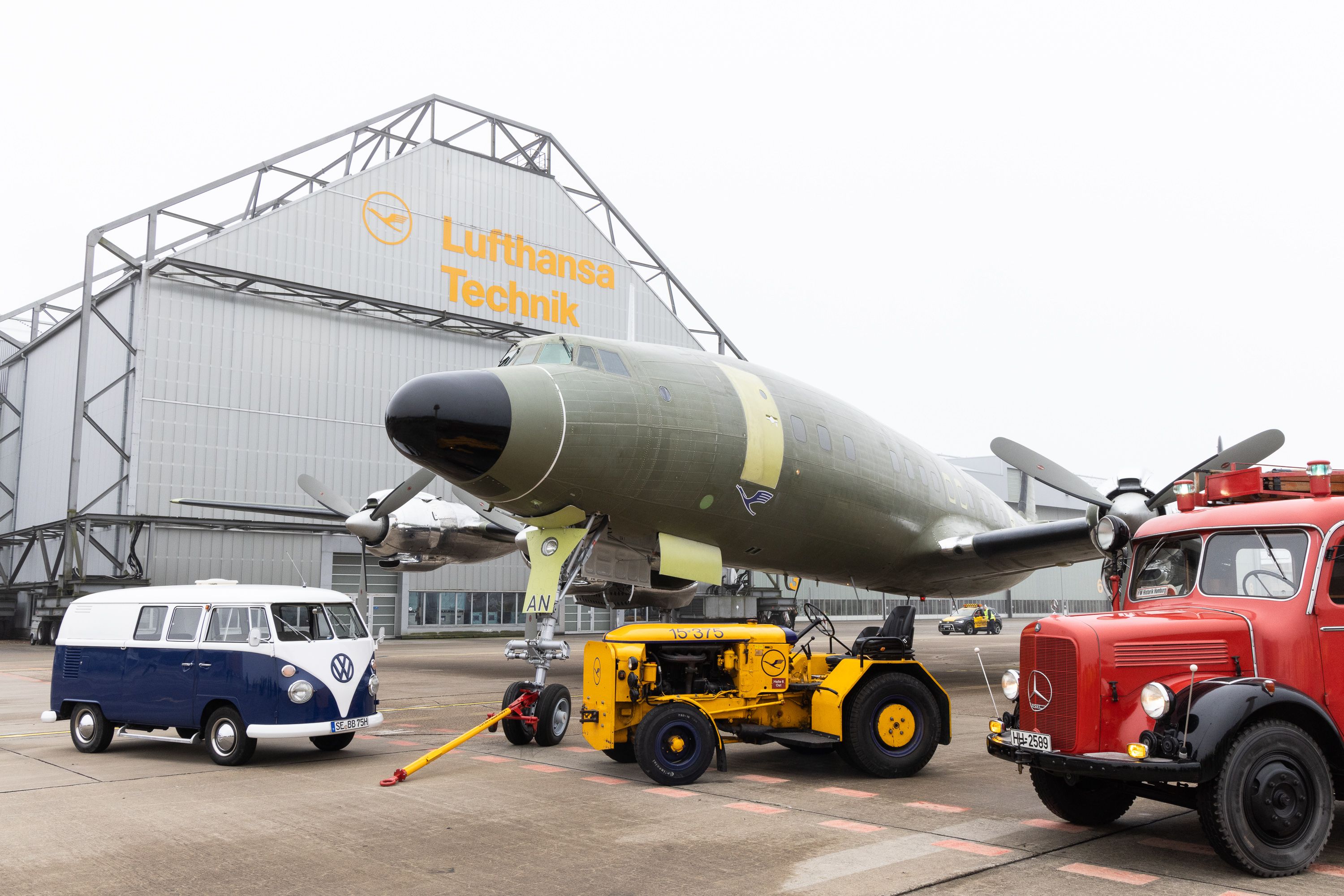
Lufthansa has completed the restoration of its Lockheed L-1649A Starliner, marketed under the name ‘Super Star’ when it was part of its fleet in the 1950s, ahead of the carrier’s centennial celebrations in 2026. Fully restored aircraft Lufthansa said that its maintenance arm, Lufthansa Technik , completed a monumental task: restoring and assembling an L-1649A Starliner, known as the ‘Super Star’ when it was part of the German carrier’s fleet in the 1950s. The fully assembled aircraft left the hangar in Hamburg, Germany, on its own landing gear – not power – for the first time on January 17.
Lufthansa detailed that the initial challenge was the precise assembly of several large components. In October 2023, technicians at Lufthansa Technik received the fuselage, wings, the iconic triple-tail unit, and 292 wooden crates with smaller parts. “A particular highlight of the non-airworthy assembly is the fact that the cockpit is as true to the original as possible from the 1950s.

The lighting and controls are functional, while cable pulls make the rudders and flaps movable - a fascinating detail that pays tribute to the engineering skills of this era.” Lufthansa is honoring two classic aircraft ahead of its 100th anniversary. New paint However, the aircraft rolled out of the hangar in primer.
As such, Lufthansa said that the L-1649A will be dismantled – again – into larger segments and transported to Münster/Osnabrück Airport (FMO) in July, where it will be painted with the original Lufthansa colors. The interior will be a mix of the current and past, with the airline noting that the seats on the aircraft had previously been used by one of its Airbus A340 aircraft. Lufthansa detailed that the seats were redesigned and upholstered in wine-red leather, while the carpet and curtains took inspiration from historical patterns.
According to the carrier’s statement, the ‘Super Star’ joined its fleet in 1957, while Lufthansa Technik pointed out that the type began flying Transatlantic journeys on March 17, 1958. “The main focus of the service was the connection to New York, which could be flown non-stop across the Atlantic. The aircraft was therefore also a technical masterpiece.
With its four piston engines, it closed the chapter of classic propeller-driven aircraft on the North Atlantic routes.” The Transatlantic flights lasted up to 17 hours and typically took off from Hamburg Airport (HAM) since Lufthansa had a maintenance base at the airport, which made the rollout location of equal importance to the airline and its maintenance subsidiary. “An exclusive Lufthansa First Class cabin with 32 seats, an elegant onboard lounge, and comfortable beds for night flights made the plane unforgettable for those who could afford to make the journey between the Old and New Worlds on a ‘Super Star’.
” Centennial celebrations Nevertheless, once it is painted, it will be moved to Frankfurt Airport (FRA), where it should arrive in October. There, the ‘Super Star’ will join another vintage Lufthansa aircraft, a Junkers Ju 52, registered as D-AQUI. The pair will become the key attraction of Lufthansa Group’s new conference and visitor center that should open in spring 2026, just in time for the airline’s centennial celebrations.
Lufthansa said that due to the glass façade, the Ju 52 and the L-1649A ‘Super Star’ will be visible from the outside. The airline's Junkers Ju 52 and Lockheed L-1649 Super Star will be proudly displayed in the new facility..











